Meet Russell Pirihi: A Journey of Dedication and Passion in Aviation
Russell Pirihi is a name synonymous with dedication, resilience, and passion in the aviation industry. With a career spanning over four decades, Russell’s journey from a young Māori boy dreaming to fly in Whangarei to the Chief Pilot and Flight Operations Manager for Northern Rescue Helicopter is nothing short of inspiring.
Russell’s aviation story began with a dream that many might have considered unrealistic. Despite having no family history in flying or the military, his determination led him to join the Royal New Zealand Air Force as a pilot. Over 20 years, he honed his skills, primarily flying helicopters and eventually leading the helicopter squadron during significant missions, including the East Timor operations in 1999 and 2000.
Transitioning to the commercial sector, Russell spent another two decades flying for an oil and gas company, taking on roles that spanned the globe. His extensive experience in chopper training and management pilot roles has made him a respected figure in the industry. Two years ago, he seized the opportunity to return to his roots in the north, where he now manages a team of 30 pilots at Northern Rescue Helicopter.
Russell’s career is marked by both challenges and triumphs. From the stress of frequent relocations impacting his family to surviving a helicopter crash in 1990, his journey has been a testament to resilience. Yet, these experiences have only fuelled his passion for aviation and his commitment to fostering a diverse and inclusive workforce.
A memorable highlight of Russell’s career was serving as an equerry for the Queen during a royal visit, a role that took him from Aotearoa to Buckingham Palace. His dedication to rescue missions, often making the difference between life and death, underscores his profound impact on the community.
Russell Pirihi’s story is a powerful reminder that with perseverance and passion, even the most ambitious dreams can become a reality. Join us in celebrating his remarkable journey and the invaluable contributions he continues to make in the field of aviation.
The six pou of Mata Ārahi Manomano drive the questions we have used to profile Māori & Pacific role models, like Russell, in the Service sector.
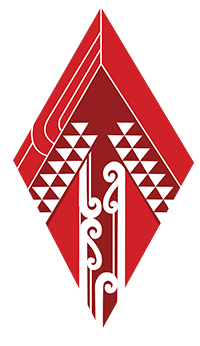
|
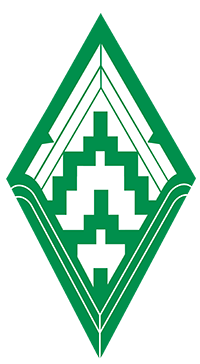
|
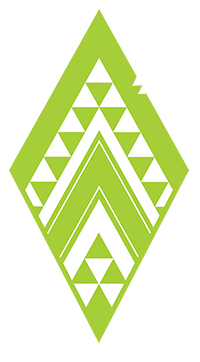
|
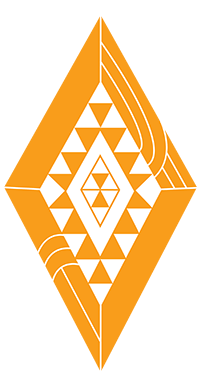
|
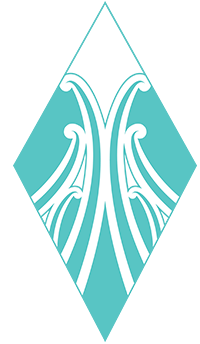
|
|

Representing the levels and forms of aroha that can be found throughout our lives across our many communities. We acknowledge the wide range of obstacles and the journey it takes to overcoming everything that stands in our way to expressing aroha within.
Hi, I’m Russell Pirihi, and I’m calling from Whangarei. Currently, I’m the Flight Operations Manager and Chief Pilot for Northern Rescue Helicopter.
We operate the rescue helicopter in Auckland, and I split my time between those two bases.
I try to keep things running smoothly. I’m married and have been for 35 years. My wife and I are both from up north, actually. We have three grown-up kids and six little mokopuna.

Seeking guidance from our kaitiaki Hiwa-i-te-rangi, we take a journey through our different aspirations, goals and dreams. This tohu acknowledges hard work, wisdom, the reach of ones goals and the desire that comes from this mahi.
What were/are your career aspirations leading into your chosen career path?
There’s no history of flying or much military background in my family. My grandfather fought in World War One, but we never talked about it.
Growing up, every boy’s dream in those days was to be a pilot or a firefighter. An Air Force recruiting officer used to visit schools around Northland once a year. We built up a bit of a relationship with that person, which got me more and more interested in a career in the Air Force. It seemed like a real long shot.
I didn’t know anyone in the Air Force. No one in my school had even been in the Air Force. I’d been on a plane once in my life. Thinking about it now, I must have been crazy because it was a huge change.
But it worked out well. I joined the university scheme, did my degree at Canterbury, and it kind of rolled on from there. It’s funny how those little seeds can set someone on a path.
I was reminded of this when I came across someone who said they remembered me from when I visited their school to talk about my career in aviation. He is now a flight captain for a commercial airline.

With adventure comes challenges as well as obstacles to overcome. We stand proud as we overcome these obstacles. This tohu draws inspiration from the Niho Taniwha and Aramoana patterns. We acknowledge reaching our destination and preparing ourselves for the many new adventures ahead.
How wīwī wāwā has your career adventure been?
I joined the Royal New Zealand Air Force as a pilot.
I spent 20 years there, mainly flying helicopters, and ended up running the helicopter squadron around the time when East Timor was a significant focus in 1999 and 2000.
After that, I transitioned to commercial flying for an oil and gas company in New Plymouth Helicopters, New Zealand. I spent about 20 years doing that, mainly in New Zealand, but also in various places around the world where they had large operations, particularly in Australia. I did a lot of chopper training and management pilot roles.
Two years ago, an opportunity came up for me to move back up north. I’m really enjoying the flying side, but a lot of my work involves managing pilots and a bit of chopper training.
I also do some work for the CAA as one of the flight examiners for some of the more advanced helicopter licenses around the country.

These patterns represent bravery and being strong in the face of adversity. We strive to be persistent and positively challenge anything that threatens to alter, restrict, and put a barrier in the way of our desired pathway.
What was your defining moment? What words of wisdom or change in heart, changed your stars?
The advantage of coming through the Air Force is significant.
People often have a slightly funny concept of the military. It’s not about marching up and down the square and giving orders. It’s very much oriented around leadership and management, which are two sides of the same coin. You get thrust into those positions from an early stage, right through your career.
For me, making the transition into my current role as Chief Pilot, overseeing about 30 pilots at Northern Rescue, was a natural progression.
Coming out of the military, I had to smooth out some of the slightly square corners that you develop. You’re often more direct than some people are comfortable with. It’s an area where I see people struggle, both in the military and civilian life.

Here we are drawing inspiration from the Pūhoro pattern. The pūhoro is used here to represent the strength, speed and agility needed to move forward and accomplish ones goals.
What future actions/recommendations do you have for those who want to be in a career like yours?
Don’t be scared to dream.
Plenty of people could easily have told me as a young fellow that being a pilot was completely unrealistic. But it happened, and that’s one of the things we try to do.
We were involved in an education roadshow through Northland at the beginning of this year. It’s about encouraging people to think, “Hey, have you thought about this sort of job?” In a lot of areas, particularly around aviation, where it’s reasonably economically challenging, people don’t have that sort of dream.
It might not come true, but it’s possible, and it’s a pretty exciting opportunity. Aviation is going to be a growth industry around the world in the next couple of decades. There’s a real shortage of qualified people, so there are some really good opportunities.
So, have a think about it and find out a bit about it. In our role, there are pilots and engineers. We employ quite a few paramedics, critical care paramedics, so there’s a medical pathway as well. There are some pretty cool opportunities. You might take a few knocks for sure, but don’t be scared to think outside the box.
A lot of people don’t think they can achieve that. It seems like an unrealistic dream for many people, and you see that on school visits. They are probably not aware of some of those opportunities or what they’re capable of. It’s just about getting people to think, “Hey, there are some good opportunities,” and getting them on the pathway to keep that as an option.
It does come with a reasonable financial cost as well, especially if it’s learning to fly. One of the things we’re trying to do at Northern Rescue and in the recruitment agency is to break the mold of what the standard sort of person looks like that comes through the door.
Go and talk to some organizations that you think you might want to work for or that look like somewhere you might want to work. Find out a bit about the industry, what they pay, how much they work, and what you have to do to study for the exams. Get a real understanding of what’s involved.
Make yourself known to people who might need to hire you one day. You need the usual sort of stuff when trying to get into an industry. Do the legwork and find out about it.
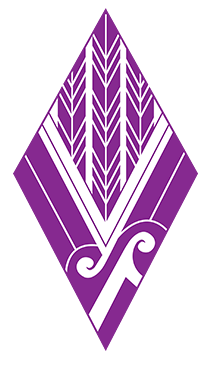
Success, best mentioned in the whakatauki “Tūwhitia te hopo, mairangatia te angitū!” Feel the fear and do it anyway!
What are some the failures/challenges in your life that have helped with your chosen career path? What are some memorable wins for your chosen path?
You know, your family pays a much bigger price than you realize. The Air Force was a big part of my life, and we used to move around an awful lot. Ever since I got out, aviation is one of those industries where you kind of go where the work is. You end up spending a lot of time away from home. That’s something you need to be aware of. I guess there are opportunities in some roles where you wouldn’t be away to the same degree, but you do kind of get the blinkers on. As the person doing the exciting stuff, you don’t quite realize how difficult and challenging it is for your family.
Our oldest son went to five different primary schools, and it was about that time I thought, well, it’s time to get out of the Air Force. That can be quite challenging. I guess plenty of different careers have similar challenges, but you do come across some quite stressful situations. You know, this rescue helicopter work is exciting, but you go to some pretty rigorous events and scenes. You need to have a way of dealing with it too.
I’m really a lot more passionate than I used to be. I guess I’ve become more aware as I’ve matured about Tangata Whenua I’m focused on getting a more diverse workforce and making opportunities for people who traditionally wouldn’t see this as a role. When I came through the Air Force, I was probably the only Māori for many years. It’s gotten a little better, but aviation tends to be a small cross-section of the community.
Other challenges? Earlier in my career, I was in a helicopter crash back in 1990. Luckily, no one was seriously injured, but we made a good mess of the helicopter. That really shook me, and I didn’t realize at the time, but it led to quite a bit of stress and anxiety in my flying career since then. It comes as a bit of a shock when you’re approaching 25 and think you’re bulletproof, like the next Top Gun, but it’s not quite true. Everyone’s fallible, and we all make mistakes. That taught me a valuable lesson about being more careful about what I think I can do versus what I can actually do.
What really brought it home to me was when we finally got out of the Air Force. Before we left, my 5-year-old, who I was putting to bed, asked, “Do we have to move again, Dad? Why are we moving again? Do we need to?” There’s no answer to that sort of question when you’re talking to a six-year-old because there’s no reason to be moving apart from the desire to progress. Those challenges are there in any career, but it’s hard to point that out to a 25-year-old. There’s more to life than thinking about yourself, but somehow, that’s a message you want to get through to this generation. If you’ve got any clues, let me know. I’ve got a couple of kids in their 20s now.
Memorable win.
I guess being an equerry for the Queen was something completely out of this world. When she did a royal visit, normally she comes with her own equerry, a military officer who hangs around, dresses up in flash gear, and stands around, typically holding handbags for the ladies and trying not to look like you’re holding a handbag. When she visits Australia, New Zealand, and Canada, I guess because we’re the trustworthy part of the Commonwealth, she doesn’t bring her own equerry. They allow the locals to nominate their own.
So off I went to London, staying in Buckingham Palace. It was my first time in London, and I was thinking, man, this is unusual for a young Māori kid from Aotearoa. It was a completely different side of the world and life. It was a pretty cool experience.
We’ve done some pretty cool rescues where we’ve flown to places that made the difference between life and death for people. That’s pretty significant for them, but it’s neat to be part of the team that can deliver that sort of thing as well.